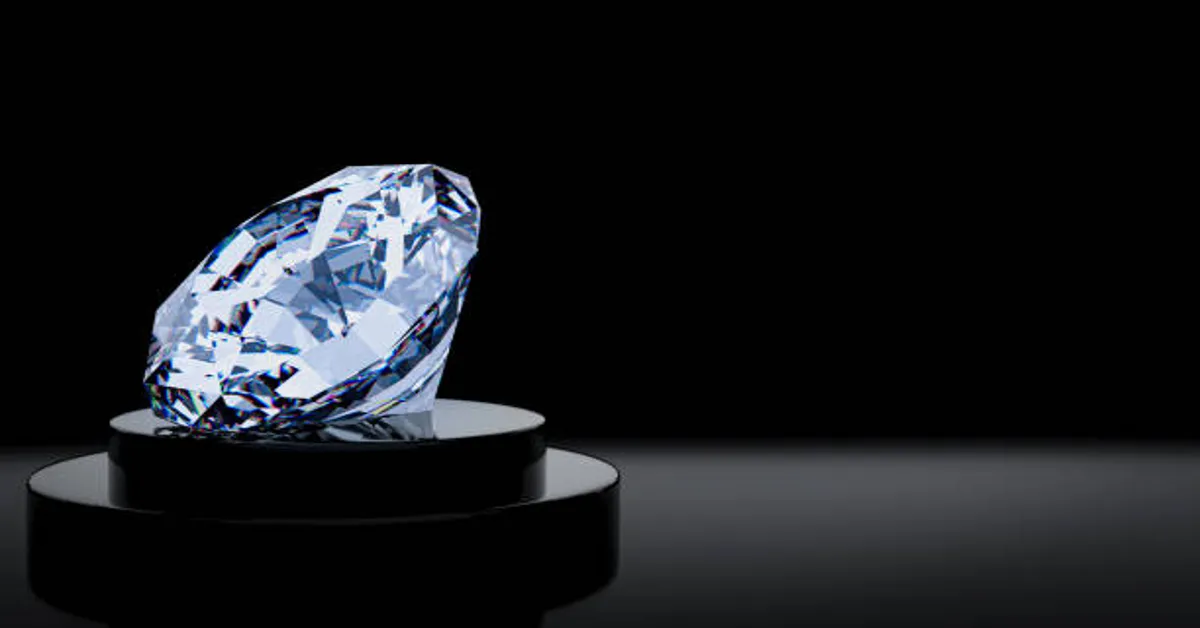Diamonds have always held a special place in human civilization. For centuries, they have been admired as symbols of beauty, luxury, and strength. Traditionally, diamonds are mined from deep within the Earth, taking billions of years to form under immense pressure and heat. However, in the modern world, science and technology have revolutionized how we create and utilize diamonds. One of the most fascinating innovations in this area is the development of fab diamonds—a term often used to describe fabricated or engineered diamonds that are created through advanced laboratory processes rather than natural geological formation.
Fab diamonds are not just replicas of natural diamonds; they are genuine diamonds in every chemical and structural sense. What sets them apart is that they are produced in controlled laboratory environments where scientists can tailor their size, quality, purity, and even functionality. Unlike natural diamonds, which are primarily associated with jewelry, fab diamonds are now making their mark in various industries, including electronics, optics, medicine, energy, and quantum computing.
This article takes a comprehensive look at fab diamonds, exploring their history, manufacturing methods, properties, applications, advantages, challenges, and future potential.
What is a Fab Diamond?
A fab diamond is a diamond created using advanced fabrication techniques, typically in laboratories, rather than extracted from natural deposits. These diamonds are chemically identical to natural diamonds, as they consist of carbon atoms arranged in a crystal lattice structure. However, unlike natural diamonds formed over billions of years, fab diamonds can be created in weeks or months.
The term “fab” not only refers to “fabricated” but also carries connotations of being “fabulous” and “future-ready,” as these diamonds represent a new era in material science. Their appeal lies in their versatility, affordability, and ethical production compared to mined diamonds.
Methods of Fab Diamond Production
Fab diamonds are grown using two primary methods, both of which replicate the conditions under which diamonds naturally form:
1. High Pressure High Temperature (HPHT) Method
- HPHT mimics the extreme conditions under which natural diamonds form.
- Carbon is subjected to pressures exceeding 5 GPa and temperatures above 1,500°C.
- A small diamond seed is placed in the growth chamber, and carbon atoms gradually deposit around it, enlarging the diamond.
- HPHT diamonds are often yellowish due to nitrogen impurities but can be treated to enhance clarity and color.
2. Chemical Vapor Deposition (CVD) Method
- CVD involves breaking down carbon-rich gases, such as methane, in a plasma chamber.
- Carbon atoms are deposited layer by layer on a diamond seed crystal, forming a diamond over time.
- This process allows greater control over purity, color, and thickness.
- CVD diamonds are especially valued for technological applications due to their high optical and electronic quality.
Properties of Fab Diamonds
Fab diamonds share the fundamental properties of natural diamonds, but with added benefits of customization.
| Property | Description |
|---|---|
| Hardness | Fab diamonds rate 10 on the Mohs scale, the hardest known material. |
| Thermal Conductivity | Exceptional, making them ideal for heat dissipation in electronics. |
| Optical Transparency | Transparent to a wide range of wavelengths, from ultraviolet to infrared. |
| Chemical Resistance | Resistant to acids, alkalis, and most chemical reactions. |
| Purity Control | Can be grown with fewer impurities, enhancing industrial performance. |
| Customizable Doping | Can be engineered with specific impurities for electronic and quantum uses. |
Applications of Fab Diamonds
Fab diamonds have transformed from luxury gemstones to versatile industrial materials. Their applications span multiple sectors:
1. Jewelry and Luxury Market
- Fab diamonds are visually identical to natural diamonds, making them popular in rings, necklaces, and watches.
- They are eco-friendly and ethically sourced, appealing to environmentally conscious consumers.
- Their affordability compared to mined diamonds opens luxury markets to a wider audience.
2. Electronics and Semiconductors
- Diamonds are excellent heat conductors, making them valuable in cooling electronic devices.
- Fab diamonds are used in semiconductor industries for high-performance electronic devices.
- Their wide bandgap makes them ideal for next-generation power electronics.
3. Medical Field
- Diamond-coated surgical tools are sharper and last longer than traditional instruments.
- Nanodiamonds are used in drug delivery systems for cancer treatment.
- Biocompatible diamond surfaces are being developed for implants and prosthetics.
4. Optics and Photonics
- Fab diamonds are transparent to multiple wavelengths, useful in lasers and sensors.
- They enhance the performance of high-powered optical instruments.
- They are employed in precision cutting and polishing applications.
5. Quantum Computing and Advanced Technologies
- Fab diamonds doped with nitrogen-vacancy (NV) centers are crucial in quantum computing.
- They enable quantum sensing for magnetic field detection and ultra-secure communication.
- Their potential in this field could revolutionize information technology.
Advantages of Diamonds
Fab diamonds hold multiple advantages over natural diamonds:
- Ethical Sourcing – No mining involved, eliminating concerns about conflict diamonds.
- Environmental Benefits – Less ecological damage compared to large-scale mining operations.
- Affordability – Generally 30–40% cheaper than mined diamonds of similar quality.
- Customization – Ability to control purity, size, and properties for specific applications.
- Consistency – Uniform quality compared to the variability of natural diamonds.
Challenges Facing Diamonds
Despite their many advantages, diamonds also face challenges:
- Perception Issues – Some consumers still prefer natural diamonds for sentimental and traditional reasons.
- Market Differentiation – Jewelers often debate whether lab-grown diamonds should be valued the same as mined ones.
- Production Costs – Although cheaper than mining, sophisticated equipment makes large-scale production expensive.
- Technological Complexity – Precision growth requires advanced infrastructure and expertise.
Comparison: Diamonds vs Natural Diamonds
| Feature | Fab Diamonds | Natural Diamonds |
|---|---|---|
| Origin | Laboratory-grown | Formed deep in Earth over billions of years |
| Time to Produce | Weeks to months | Billions of years |
| Ethical Concerns | Minimal, conflict-free | Risk of conflict or unethical mining |
| Environmental Impact | Lower, energy-intensive but controlled | High due to mining operations |
| Price | Generally cheaper | Higher due to rarity and mining costs |
| Applications | Jewelry, electronics, medicine, quantum tech | Primarily jewelry and limited industry use |
Future of Fab Diamonds
The future of diamonds looks incredibly promising. As research advances, we are moving towards diamonds that are not just substitutes for natural gemstones but entirely new materials with unprecedented capabilities. Future applications may include:
- Ultra-efficient quantum computers.
- Advanced medical implants coated with biocompatible diamond films.
- Super-powerful lasers and sensors for defense and space exploration.
- Affordable luxury jewelry accessible to a broader population.
With global industries investing heavily in diamond fabrication technology, diamonds may well become one of the most transformative materials of the 21st century.
Conclusion
Fab diamonds represent a fascinating convergence of science, technology, and luxury. By combining the timeless allure of diamonds with the cutting-edge innovations of material science, they open doors to possibilities that extend far beyond traditional jewelry. They are stronger, purer, and more versatile than ever imagined, making them indispensable in fields as diverse as medicine, computing, and energy.
As ethical and environmental considerations continue to shape consumer behavior and industrial choices, fab diamonds stand out as a symbol of progress—proof that beauty, functionality, and responsibility can coexist. Whether adorning a wedding ring, powering an advanced processor, or enabling a breakthrough in quantum technology, diamonds are truly a marvel of modern science and a glimpse into a sustainable future.
ALSO READ: Beret: A Complete Guide to History, Style, and Cultural Influence
FAQs
Q1. Are fab diamonds real diamonds?
Yes, fab diamonds are chemically and structurally identical to natural diamonds. They are made of pure carbon arranged in a crystal lattice structure, just like natural diamonds, but are created in laboratories.
Q2. How long does it take to create a fab diamond?
Depending on the method used, it can take anywhere from a few weeks to a few months to grow a fab diamond, compared to billions of years in nature.
Q3. Are fab diamonds cheaper than natural diamonds?
Yes, fab diamonds are generally 30–40% less expensive than natural diamonds of similar size and quality, making them more accessible to consumers.
Q4. Can fab diamonds be used in technology?
Absolutely. Fab diamonds are used in electronics, optics, quantum computing, medical devices, and even advanced industrial cutting tools due to their unique properties.
Q5. Do fab diamonds have resale value like natural diamonds?
Currently, natural diamonds tend to hold higher resale value due to their rarity and cultural perception. However, as technology and consumer preferences evolve, the resale value of fab diamonds may increase over time.









